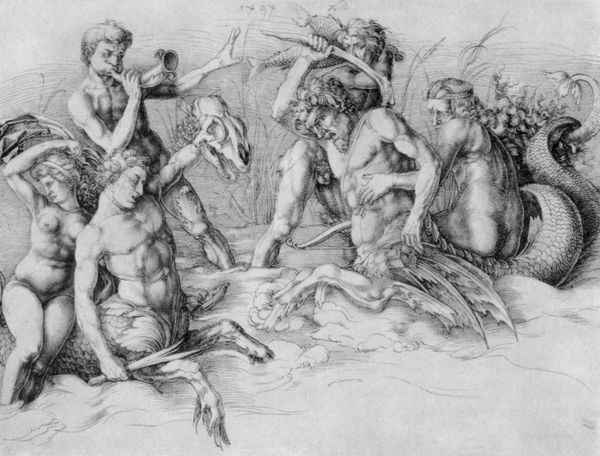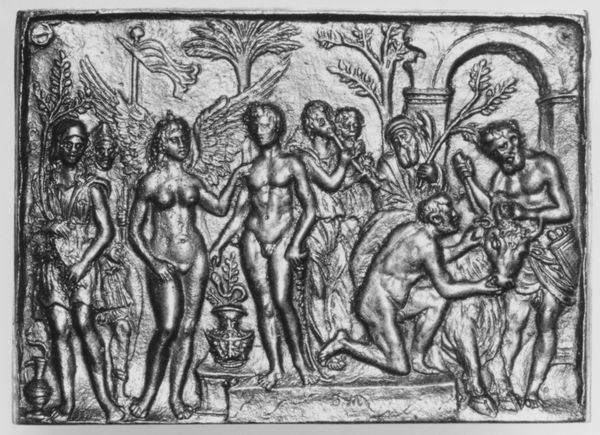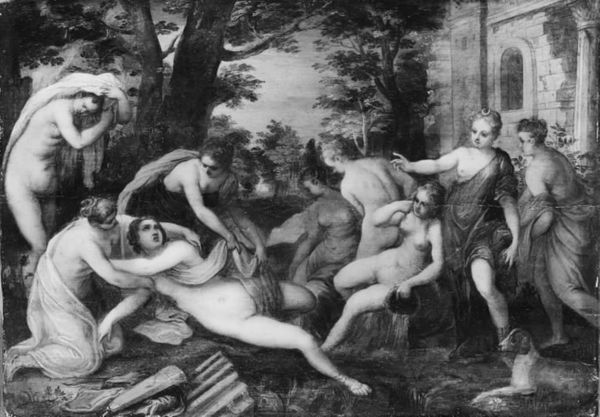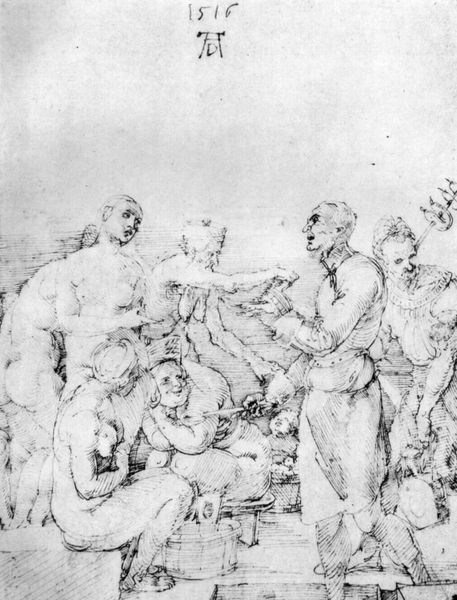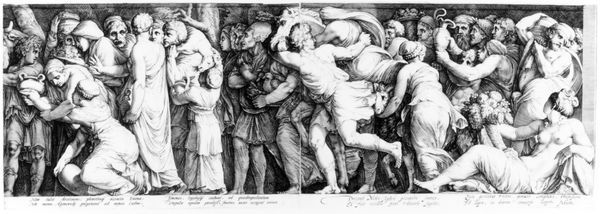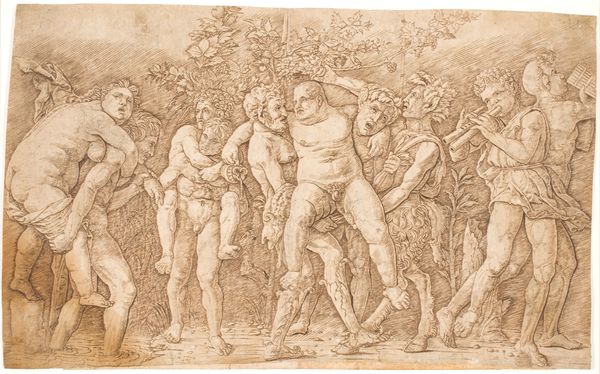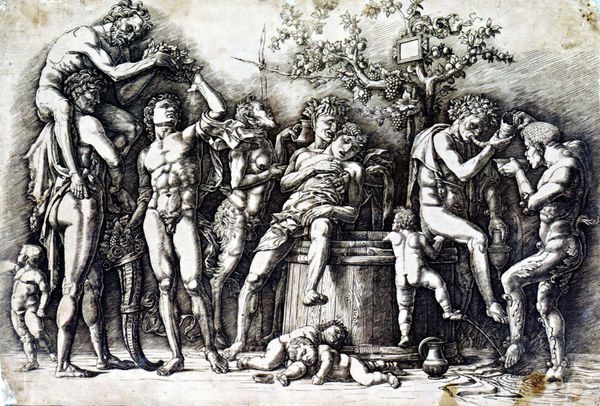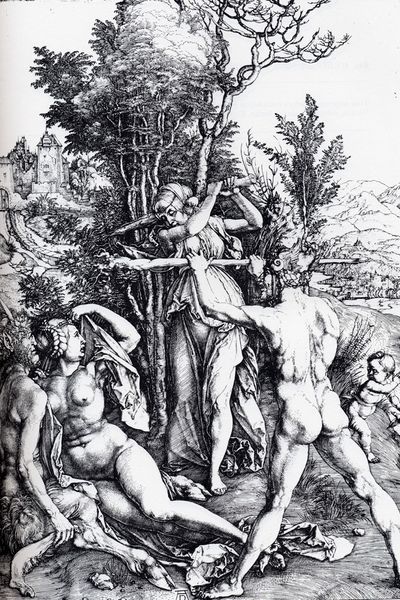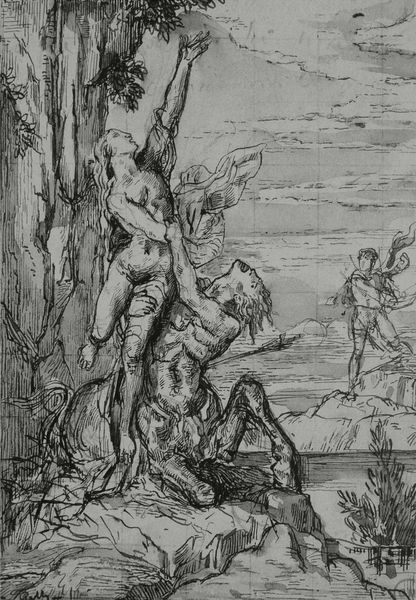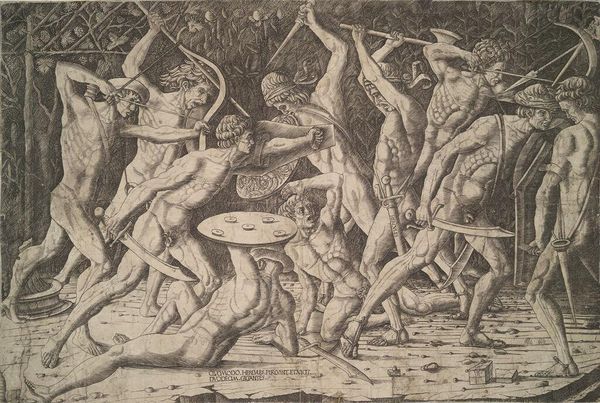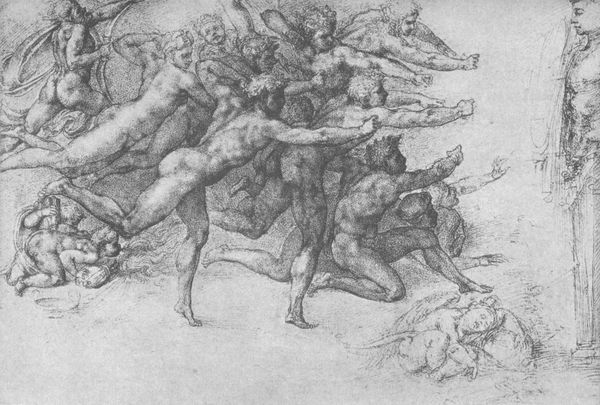
print, engraving
#
allegory
# print
#
figuration
#
11_renaissance
#
roman-mythology
#
mythology
#
human
#
history-painting
#
northern-renaissance
#
engraving
Copyright: Public domain
Curator: Let’s turn our attention to Albrecht Dürer's "Bacchanal with Silenus," created in 1481. This is an engraving, offering us a glimpse into Renaissance artistic and social currents. What's your initial impression? Editor: It looks raucous, almost chaotic. The composition feels crowded, all these figures jostling, a clear lack of refinement I see so often in material representations of social gatherings. Curator: Indeed. Consider the figure of Silenus himself, drunkenly perched, the embodiment of revelry and excess, his placement hints at older cult traditions associated with Dionysus, now rendered with a distinctly Northern European flair. It points to cultural assimilation. Editor: Absolutely, it raises questions about Dürer’s own position as a craftsman reproducing, through skilled labor, an interpretation of classical themes for a burgeoning market. It is a commercial venture but with a complex layering of cultural signifiers. Curator: Precisely, and note the grape vines. They are potent symbols here, of course, echoing themes of intoxication and fertility, key components in Dionysian rituals and in understanding social gatherings in relation to labor. It is like looking back into history. Editor: The material constraints of the engraving process interest me. The need for precise cuts to create tonal variation and detail speaks to a very specific type of manual skill, very unlike painting. Curator: I agree. That precision lends a certain power to the overall message, underscoring the calculated nature of pleasure, the controlled indulgence. The tools and techniques clearly leave their mark, almost a restraint on this unruly scene. Editor: Restraint born from the economic reality of craft. Each cut, each line has purpose and ultimately monetary value to the artist within a strict economic framework. Curator: So, a negotiation, then? Between artistic vision, symbolic representation, and economic practicality in the service of human sensuality? It offers us insight into the tensions inherent in Renaissance artistic production and cultural integration. Editor: And to remember, a work of art, is also an economic object which required very particular manual skills to manufacture. It certainly colors my perspective to recall all the specific labor practices needed to even generate art works for an elite clientele. Curator: Food for thought. A reminder of how much an image can reveal about cultural values and social context. Editor: It’s crucial to keep these socioeconomic considerations present with every artistic work we explore together!
Comments
No comments
Be the first to comment and join the conversation on the ultimate creative platform.
